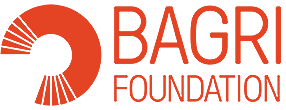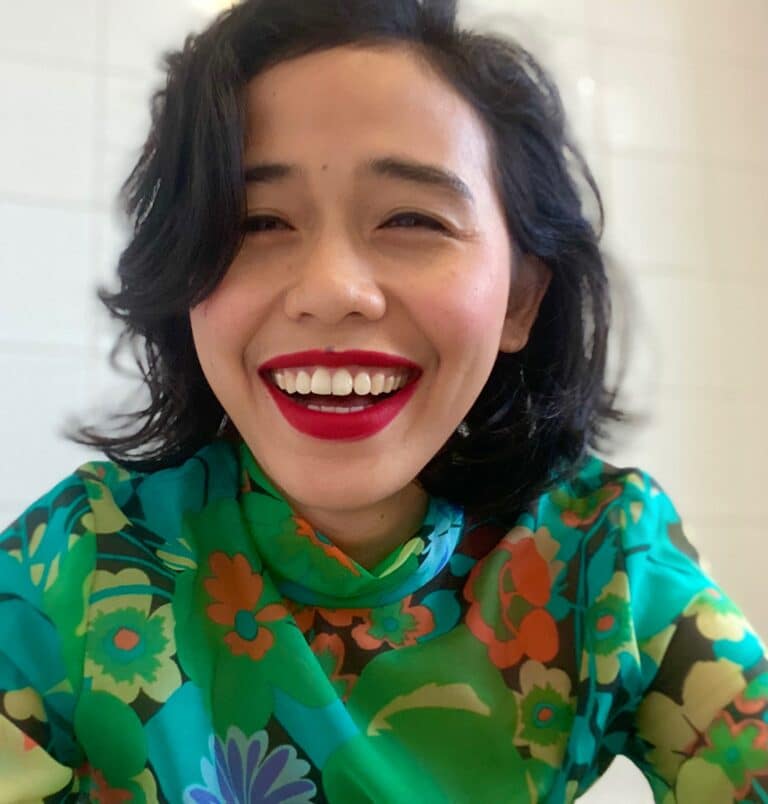Bagri Foundation: We have had the pleasure of talking to you about your work last year as part of our Open Up series of interviews. Following your practice as both an artist and curator has been inspiring and we are proud to be able to support the research and development phase of your new endeavour: “Have You Eaten?: Narratives and Stories behind Recipes from Across Asia”. Can you tell us a bit more about how you developed the idea of this project drawing from your multidisciplinary experience?
Rhine Bernardino: Throughout the years, my practice has increasingly leaned towards working collaboratively in a more cross-disciplinary manner. As I strived to connect deeper with different types of communities and art practitioners, the desire to create art by myself in an individual artist studio format became less and less desirable -unless of course the work requires heightened isolation, endurance and introspection, which is a strong aspect of what I do. With experimentation and exploration of who one can work with comes the challenge and excitement of what possible forms and representation one can incorporate in realising such works. For me, it is essential that everyone involved in any type of creation understands what is being made and more importantly, finds value in it, that it makes sense to them. Then, there’s the drive to make the work as accessible as it can be, because I truly don’t see the point of it all otherwise. I envision all of these strands converging in “Have You Eaten?”. There has always been an urgency in communicating the plight of the Southeast Asian migrants, but this has escalated in new heights during the pandemic, with significant toll in BIPOC communities, particularly Filipino healthcare workers. The project was born out of this desire, almost a desperation, to aid in sharing their experiences and our stories, to be told by us, to as wide a group of people as possible. The project opens up the possibility of working with East and Southeast Asian migrants alongside a diverse group of art practitioners combining various artistic mediums such as photography, moving image, painting, drawing, illustrations and the literary medium to utilise the more accessible format of a cookbook. The structure of a cookbook works perfectly well because it is something that has the capacity to enter people’s homes, and therefore minds, without theoretical barriers. Through art and food, which we consider the essence of our culture, everyday lives and celebrations, the collectively made cookbook aspires to bring together Asian artists with members of our community who are fundamental in keeping the fabric of British economy and society safe, alive and intact.
BF: “Have You Eaten?” works at the intersection of socially engaged art, publication, digital, live, and collective creation. How do you plan to explore these connections and relations during this first period of the project?
RB: Community collaborators who will be invited for the project are engaged or working in differing fields, the same way as the artists are of different Asian backgrounds working on different mediums with distinct styles and aesthetics. This project aims to showcase the complexities, intricacies and the wide range of Asian cuisines as well as art practice. The idea is to connect with the East and SEA communities in London (possibly other parts of the UK, COVID-restrictions permitting) to learn about their lives through their favourite dishes from home. Coupled with this is the investigation of the ways they or their families adapt to new communities by combining the fundamentals of their own culture with the best of what they encounter, which also applies in replicating traditional recipes. Ultimately, the project is centred on stories and narratives behind these foods. To compliment the artist cookbook, A series of prerecorded mini cooking sessions will also be produced and made available online with subtitles and audio descriptions to make them as accessible as possible.
The working and collaborative process with communities, no matter how casual or professional, is mainly relational rather than transactional, so time spent with people is a major factor. Therefore, the whole R&D process will take up to at least a year, communicating back and forth with significant gaps in between to provide mental space for ideas to marinate whilst accommodating to collaborators’ varied schedules. The project will require prolonged conversations, consultations and feedback sessions to make sure that everyone understands the objectives of the project, along with their stories and artworks being properly presented and communicated. I will be working with organisations like Kanlungan Filipino Consortium, Southeast and East Asian Centre (SEEAC) and Status Now which represent a big portion of migrant workers, refugees and asylum seekers in the UK, but I want to extend the scope of my network wider to include more diverse voices in this project, especially those whose micro-narratives need to be spotlighted due to the severe impact of the pandemic to their lives.
A mini version of the cookbook will be created, serving as a testing ground for a fully realised artist cookbook. This will comprise three recipes, commissioning three artists with differing art practice — mainly exploring photography, painting and digital illustration, along with a video of conversations and creation of the recipes that will be shared digitally. Since it is both a piece of artwork and a strong symbolic cultural artefact that will reside in peoples’ homes, it is of utmost importance that every aspect of its material component is thoroughly and carefully laid out. In this regard, I will be seeking advice from experts on different types of paper, book design illustration and disability consultants to make the cookbook as accessible to as many groups of people as possible. I started conversations about using and possibly making custom-made paper made of rice. Aside from being absolutely mothproof and rot-proof, rice paper had been traditionally used in Chinese calligraphy and painting. In addition to this, I want to look into the possibility of adding Braille and including audio narration as part of the cookbook. I see this both as an ideological and practical way to expand and challenge our notions of how a cookbook can be, what form can artwork be manifested and what are the ways that these can be combined to be accessed and communicated to reach wider sectors of society.
This R&D grant will provide a strong foundation in nurturing artist and community collaborations that will significantly aid in figuring out the process to efficiently produce a well-researched full scale artist cookbook. All the intricacies and learnings from the communication process, material and digital component to the widening of accessibility from pre to post production will contribute to the creation of this timely cultural artefact.
BF: If we fast-forward to 2022, what would a good end of the R&D period look like to you? Looking beyond next year, how do you see the project developing, in your dream scenario?
RB: This project, being a community-based, collective endeavour requires a more qualitative way of assessing its successes. Thus, it is essential and of utmost important that the artists and the community collaborators feel properly represented with the outcome of the R&D as well as the manner in which the communication, consultations and the feedback sessions were conducted. I want them to have a sense of pride and ownership of the work and their contribution in realising a cultural artefact that is of the community. In addition to this, it will be a good measure if the mini cookbook prototype would generate a higher sense of excitement and anticipation for the creation of a fully realised artist cookbook. Although superficial, the number of views and engagement of the videos online and in social media is also a good way to reflect interest within the community and a wider audience who are only able to experience its digital manifestation. Another exciting part for me, which I really hope to be a great success is the possibility of having a wider reach and for people with different disabilities to experience this artist cookbook.
To know more about the Bagri supported Unlimited Research & Development Awards selected artist click here.
Rhine Bernardino is an artist, independent curator and researcher with a background in filmmaking. She holds an MA Fine Art degree (Sculpture) from the Royal College of Art, for which she was awarded the highly-regarded Abraaj-RCA Innovation Scholarship. Rhine has curated and exhibited her artwork internationally especially in Europe and Asia. She has been invited to take part in several international art residencies and programmes most recently as part of the Australia Arts Council’s Future Leaders Programme and Office of Contemporary Art (OCA) Norway’s International Visitor’s Programme. She’s been doing an extensive field research and mapping of art collectives, alternative spaces and community-based projects across the globe. In building on this work, she’s been looking at a myriad of possibilities of working with communities through art practice in driving societal change and aiding in highlighting the marginalised voices of communities and societies.
Interviewed in April 2021 by Alessandra Cianetti, Project Manager


